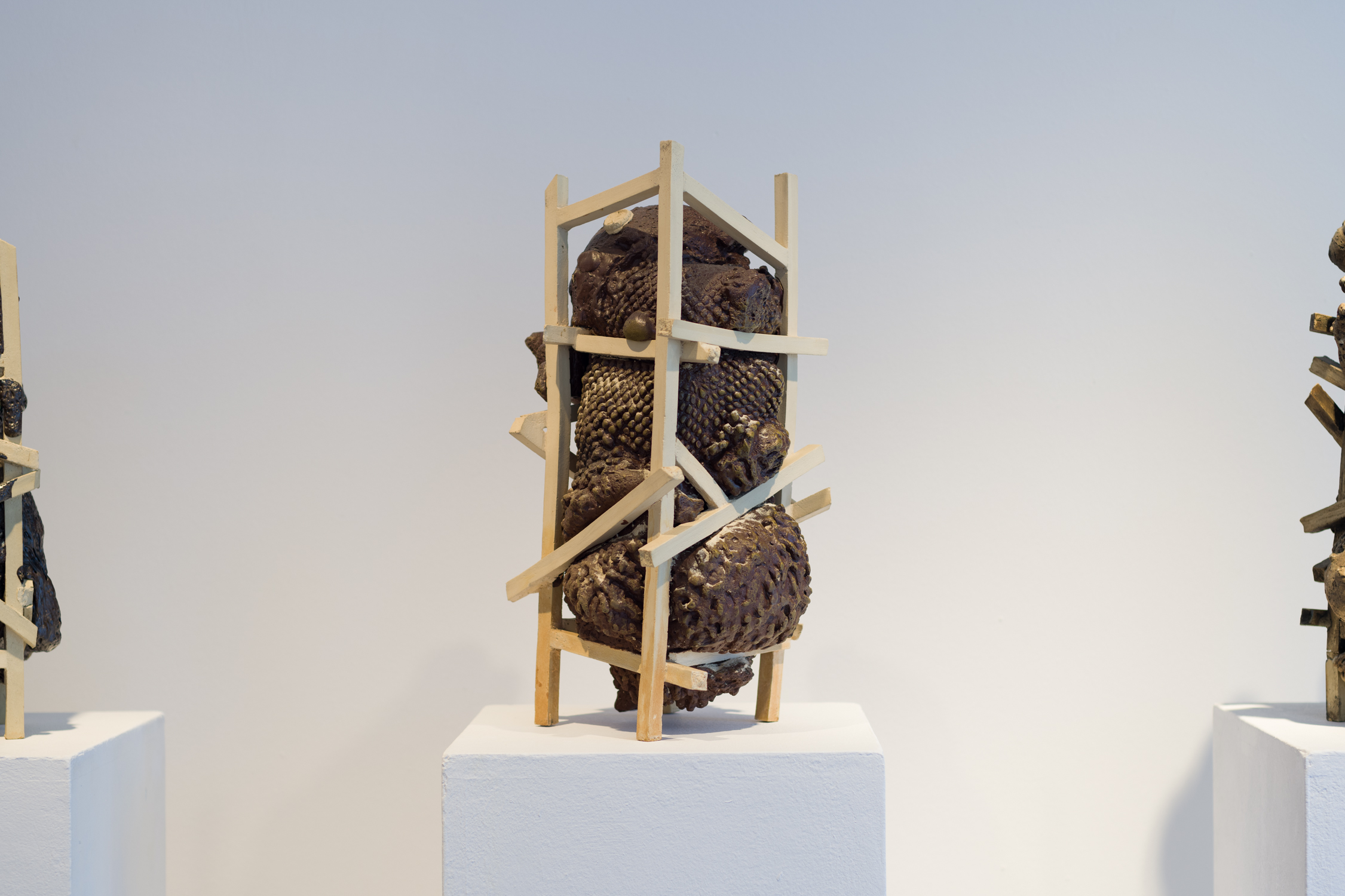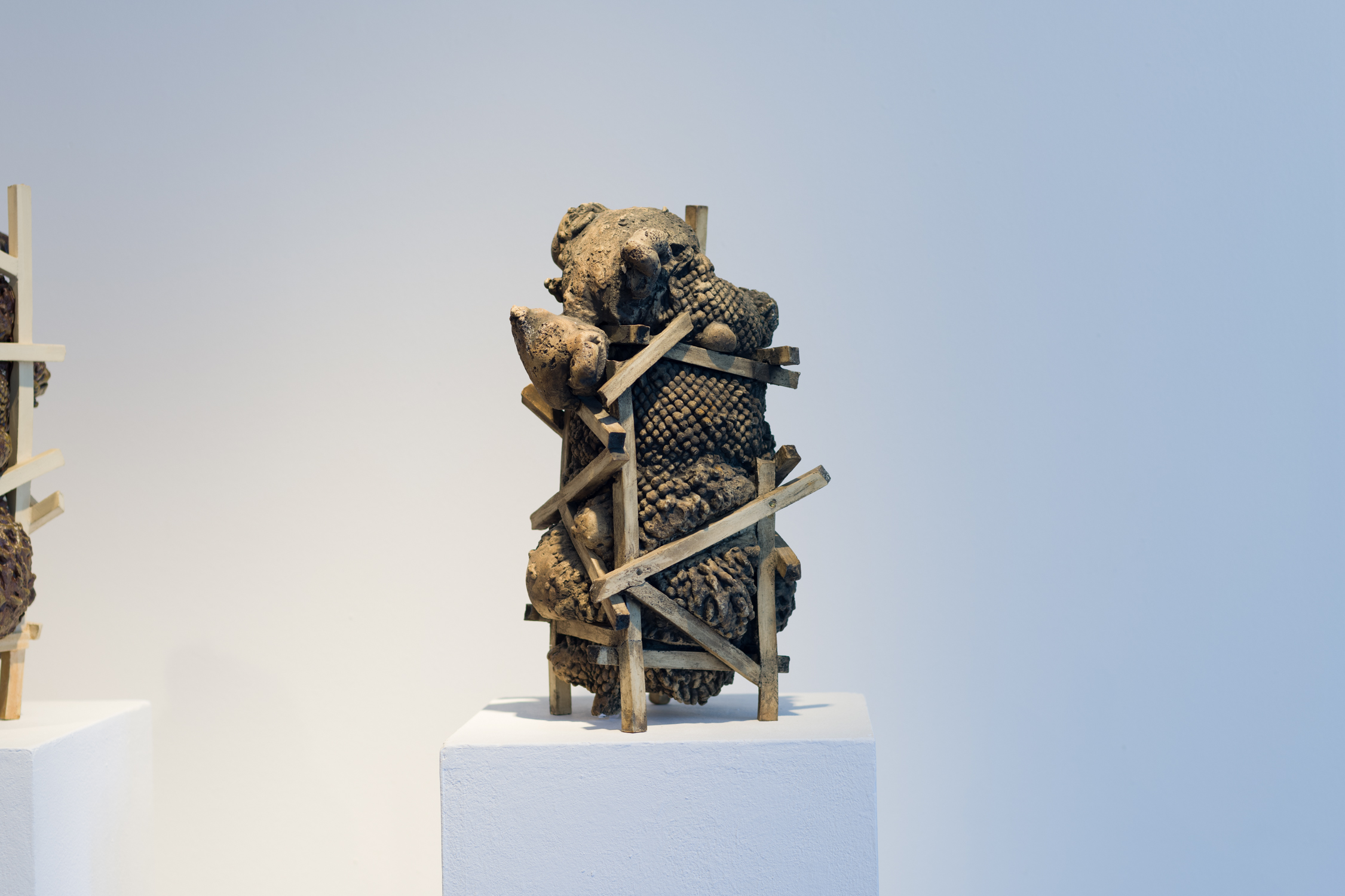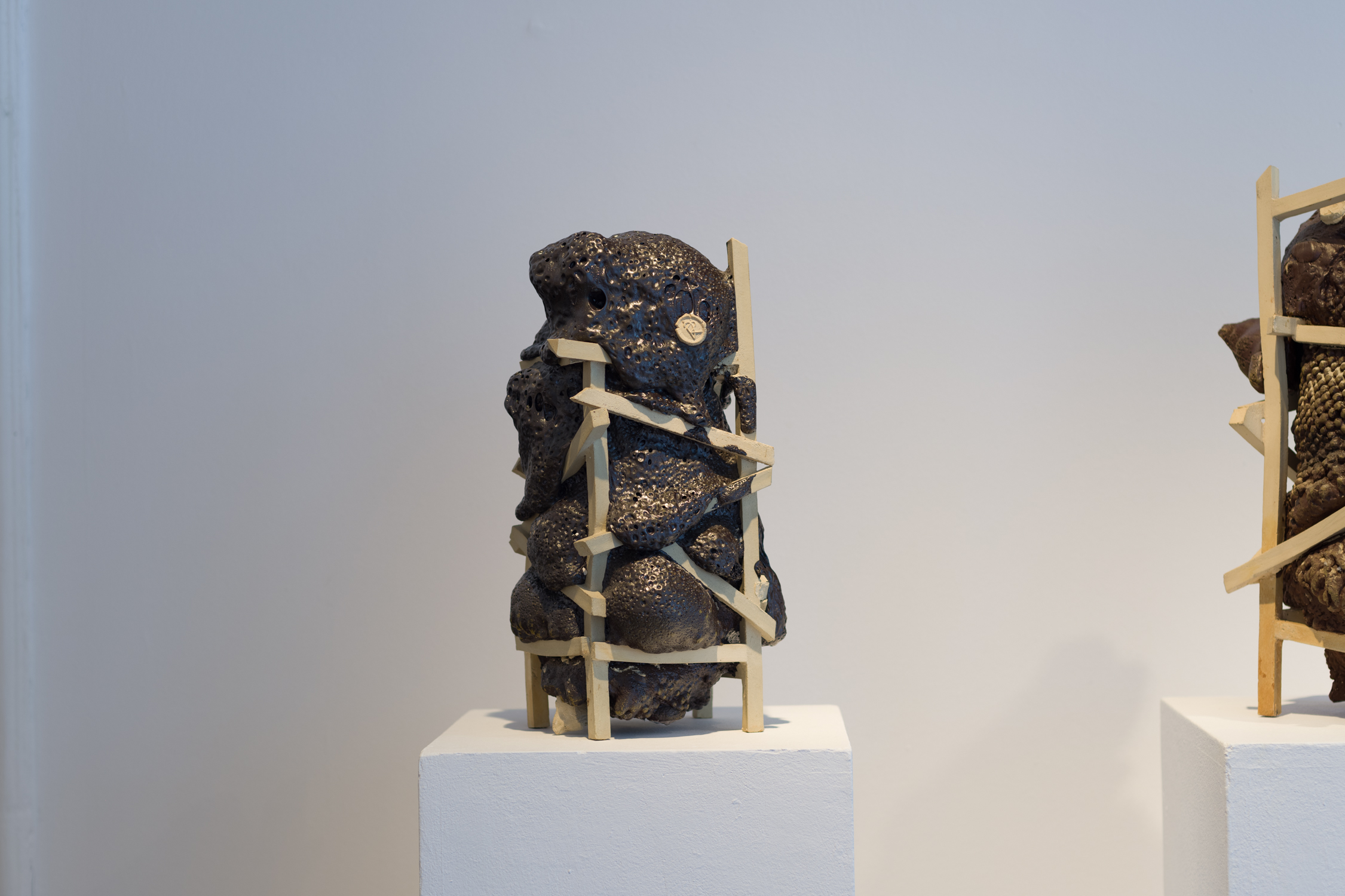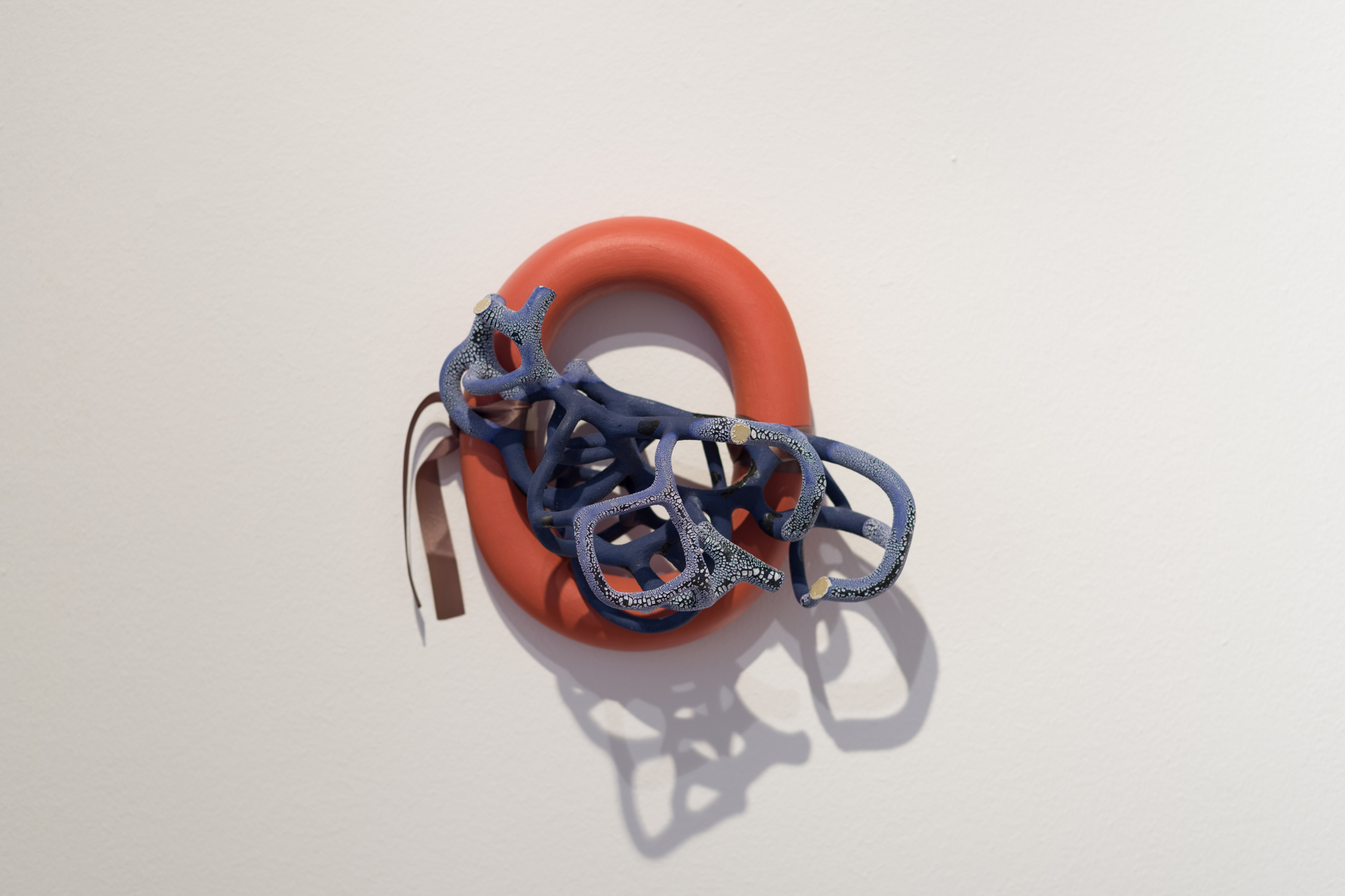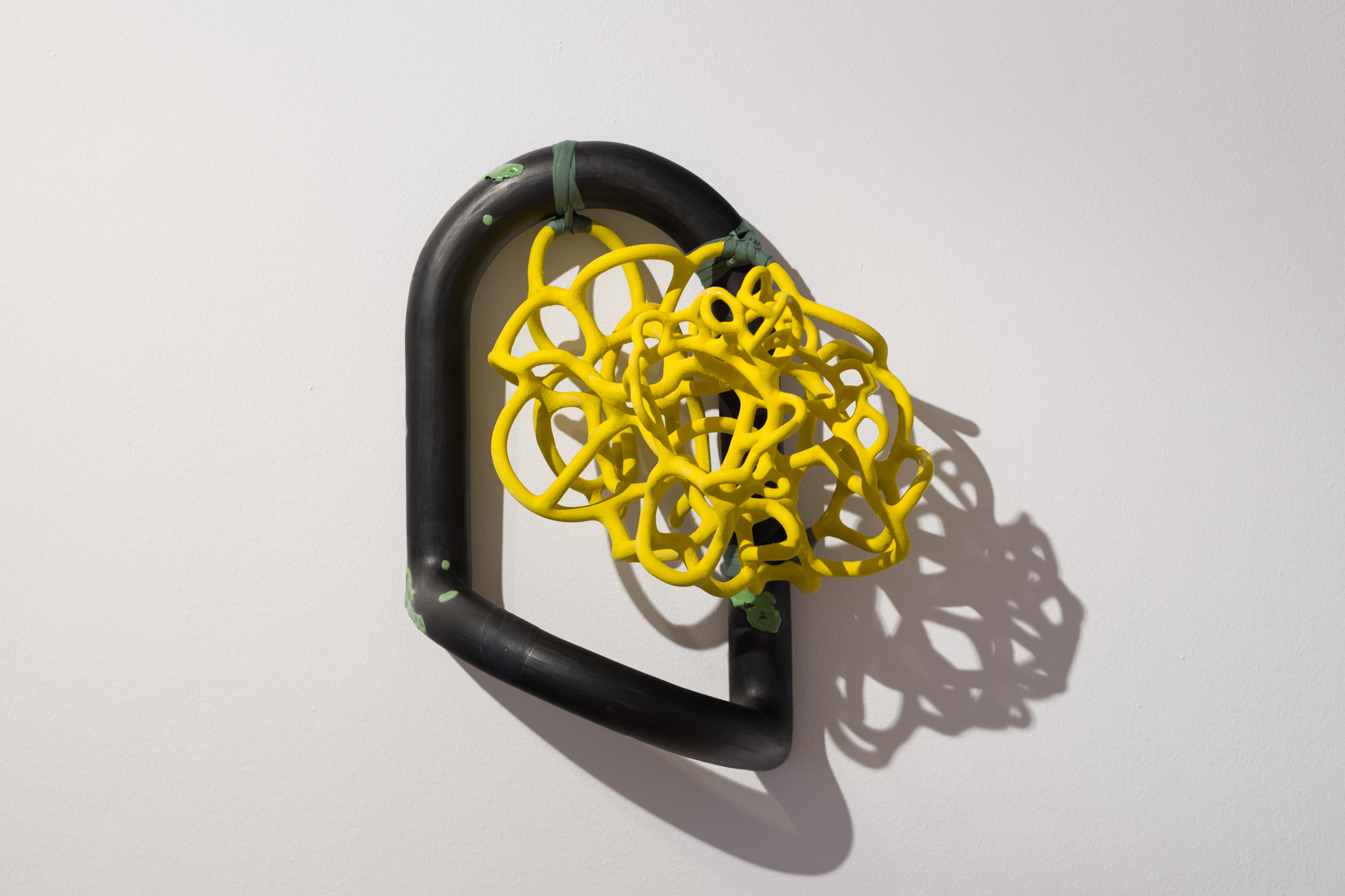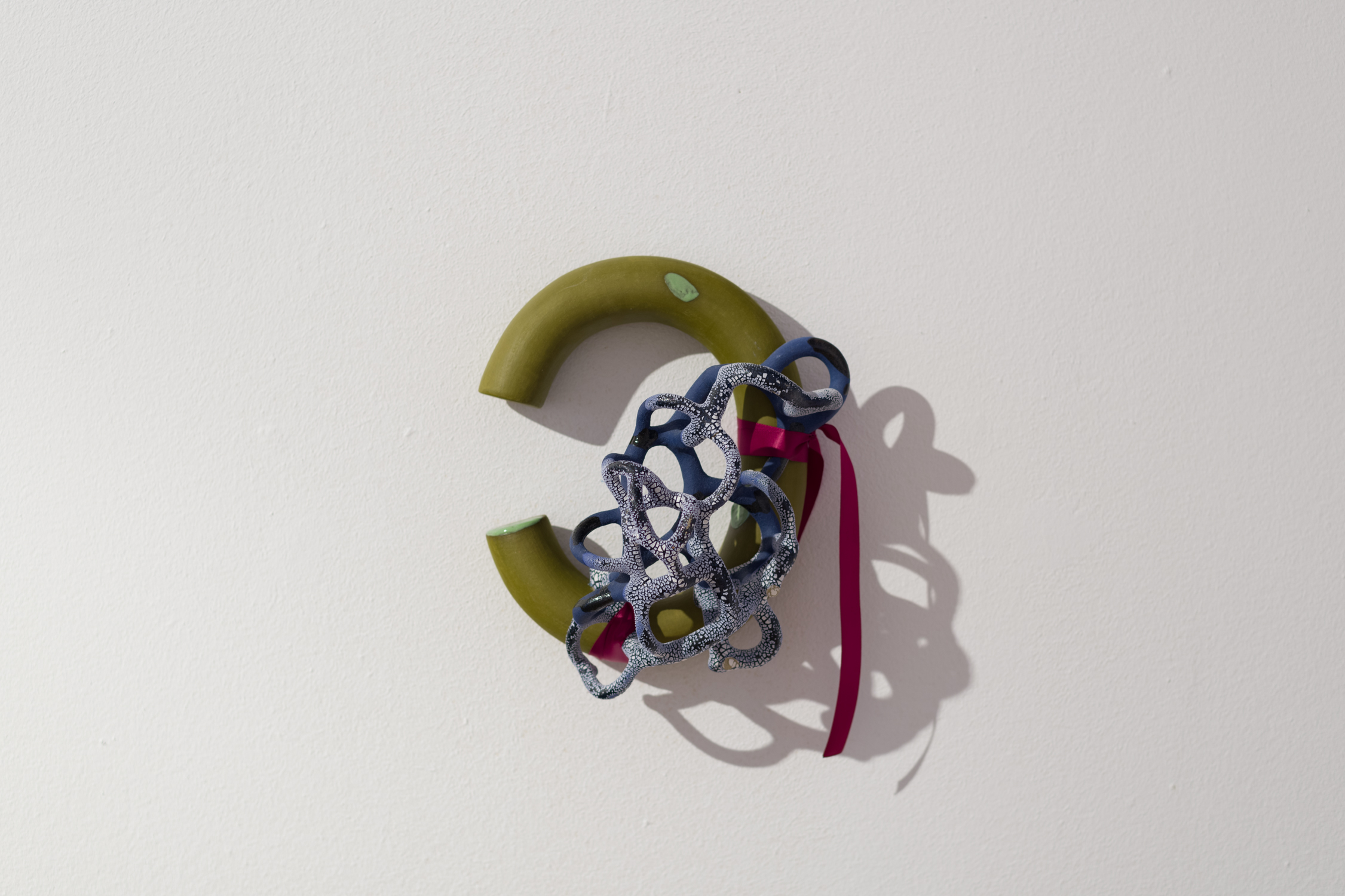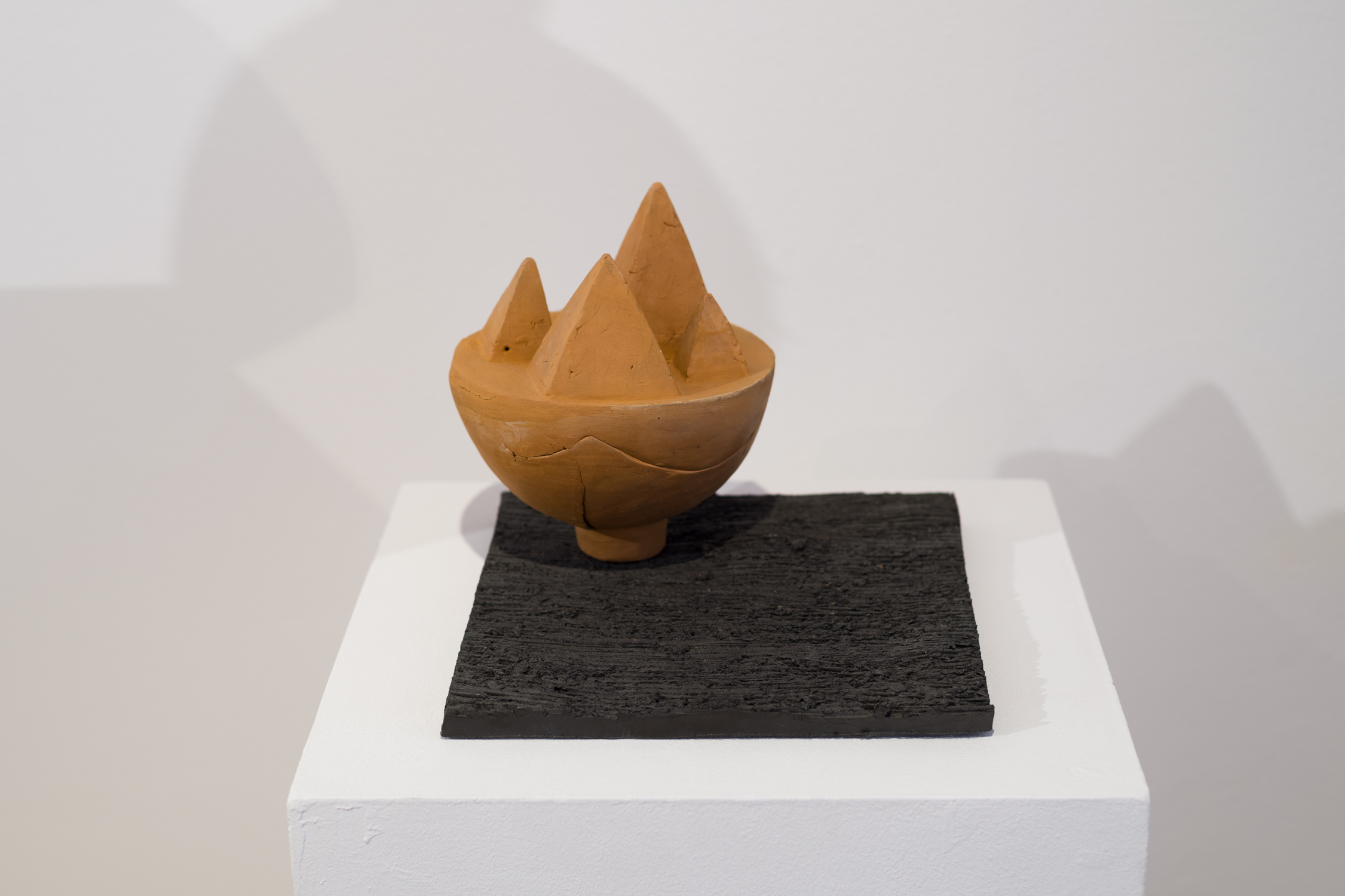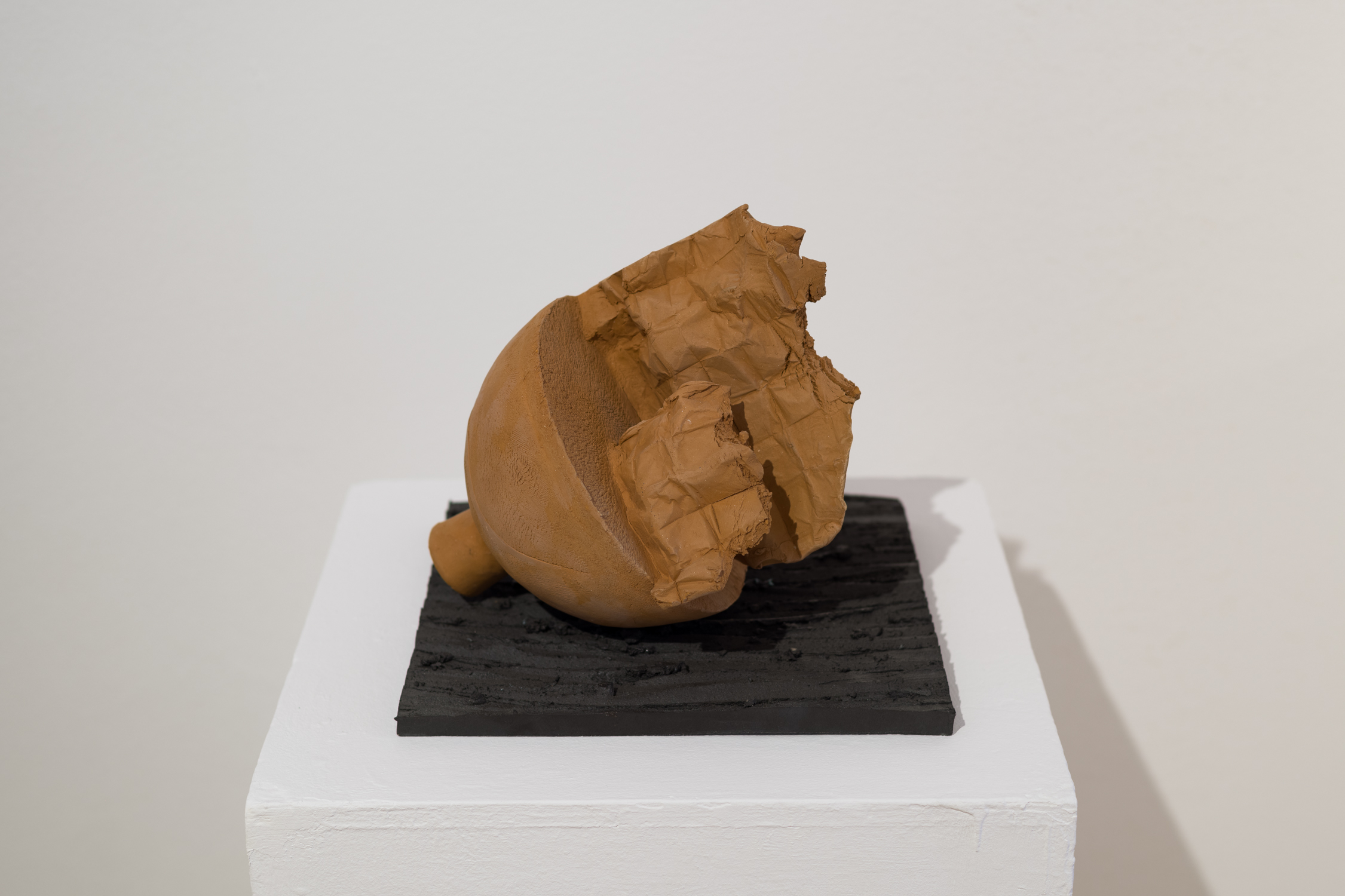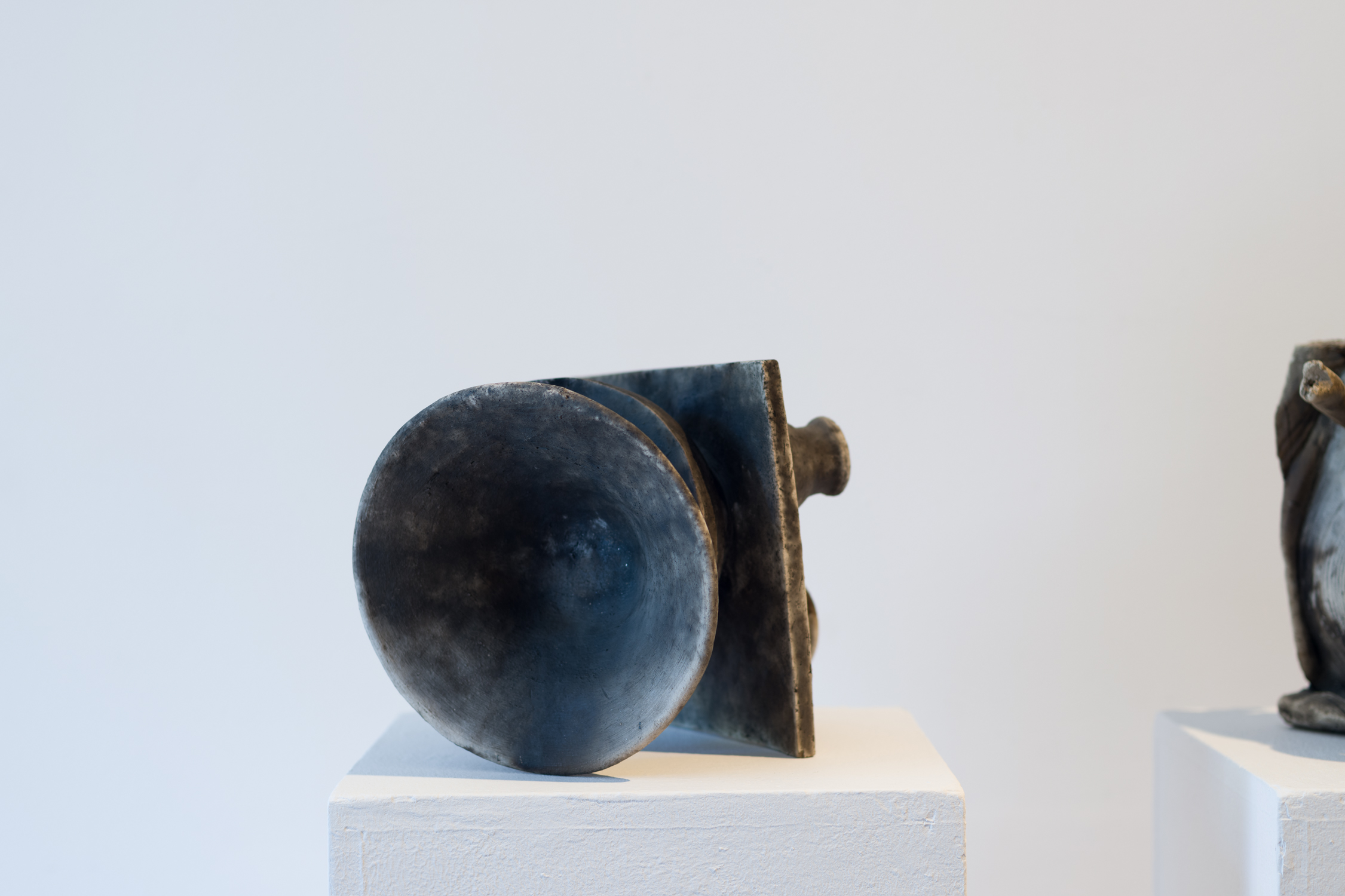Ilie Rusu | Diana Butucariu | Tiberiu Dăncilă | Anca Vintilă Dragu | Victor Costache | Marius Stanciu | Mădălina Teler
Continuity is the medium through which the craft or the technology of ceramics remains alive. The direct, practical transfer, from master to disciple, or, nowadays, from teacher to student, represents the engine of continuity.
The present exhibition focuses on the relationship between teacher and student via the development of the work of art. The selection of works on display brings forth a dialogue between Ilie Rusu, professor, since 1990, at the National University of Arts in Bucharest (UNArte) and several generations of his graduates in Ceramics.
With work developed in their individual studios, Anca Vintilă Dragu, Diana Butucariu, Mădălina Teler, Tiberiu Dăncilă, Victor Costache and Marius Stanciu present their output together with their teacher. The association of works brings forth the artistic development as it relates to a process of artistic education, based on the ‘School of Cluj’ tradition – which is also the teacher’s own formative environment. In the present context, the notion of ‘school’ is meant to bring together the principles which have built the education vision of the academics who have taught Ceramics at the Arts University of Cluj in the 80’. In that context, the art object was observed, researched and conceived in a carefully researched balance between essence, concept and form.
The information and experience transmitted by the teacher to the student, even in fragment form, sets the foundation for explorations of self. The student explores himself/herself in relationship with the craft and the vocation he /she is training for. The student acquires an autonomy which enables him/her to find their own path in Art. The Teacher launches topics for reflection and practical exploration based on his own experience in relation with his own practical and conceptual experience.
In the years following university graduation, the artists presented in the exhibition have continued in the profession of ceramist, deepening and identifying new meaning in the experience they developed while training with Ilie Rusu, their teacher. Developing an individual artistic vision, each has grown through the work undertaken in their own studio or in units they shared with fellow artists. The diversity of their work is a token of the complementary nature which is specific to ceramics – which develops ‘horizontally’, between the utilitarian object and the artistic creation, and also ‘vertically’, between the conceptual approach and its formal rendering.
Ilie Rusu perfected his artistic creation in relation with his calling as a conveyor of experience to the young. After 1990, he joined the academia, changing in this way the medium for which he initially trained, namely industrial ceramics.
Ilie Rusu chose to teach in Bucharest academia in order to transfer to his students the experience he had acquired during his time working in the industry. His job as a model designer in the porcelain factory was constantly fueled by his personal artistic endeavors, visible in his own art exhibitions track-record.
In the field of ceramics, the practical stage of factory work served as a school in itself, in terms of the relationship goes between the artistic creation and the utilitarian element of the object. The model designer is constantly influenced by the technological and social components, which are essential in producing the ceramics object.
In the same manner in which colleagues who initially worked in the porcelain industry and subsequently took up a teaching career, Ilie Rusu transfers to his students a whole body of lived experience. The teaching approach unfolds, simultaneously or alternatively, on two work dimensions: the creation of the art object and the creation of the utilitarian object. In actual fact, the transfer of experience is predicated on the hypothesis that there is a continuous relationship between art and utility. The personal artistic practice informs the relationship with the students, so much so that teaching comes in as a natural continuation of the artistic creation. Based on the themes for reflection and hands-on practice assigned by the teacher, the young students go through the natural stages leading to the creation of the ceramic object.
During his tenure at the National University of Arts in Bucharest, Ilie Rusu has come into contact with colleagues trained in the two main academic centres of Romania: Bucharest and Cluj. Initially, the intersection of the two teaching approaches generated some minor contradictions in terms of method, work approach and specific artistic traditions. This phenomenon has produced however, over time, a beneficial emulation which has resulted in a modern teaching approach, with contemporary relevance.
The Bucharest School excelled in virtuosity and a certain spectacular quality, which involved an aesthetic approach leading towards monumentalism. The spectacular element was derived, on the one hand, from the form of the ceramic art object and, at the same time, from the choices of materials for ceramics decoration – various types of colored glazing, chiefly used in the industrial tiles field. Leading ceramics artists trained in Bucharest, such as Costel Badea and Alexie Lazăr Florian have taken centre stage and have represented the School, being always present at the main exhibitions of decorative arts, like the ones held at the Sala Dalles.
At the other extreme, the approach of The Cluj School, represented by Ana Lupaş and Mircea Spătaru, was allowing students total freedom of expression, in that it encouraged a constant interrogation about the relation between form-essence-concept. Two key elements in this were originality and modernity. These were subtly embedded in the work, through a steering of study towards artistic experimentation. Students were encouraged to look within, to observe in detail the object, aiming to achieve a thorough understanding of the object in terms of concept and structure. This initial process was meant to develop into the accuracy of form, at the level of surface, texture and artistic detail. This rather minute, careful approach of the object, almost at the miniature level, was coming from the permanent attempt to focus the relationship between essence and matter. Although the raw material was abundantly available in the factory where students had their practical stages, it was used parsimoniously. The endeavor was to direct the artistic intervention more towards the conceptual side, in a symbiosis with the aesthetic requirements involved in putting together the ceramics object. Also, the thinking and projection of future context, following the creation of the object itself, included the outlining of a relationship of the art object with a likely exhibition space context.
In terms of the artistic formative context, it was very important that, in the 80’, Cluj was the most important industrial centre for porcelain – house-hold, sanitary and decorative. IRIS was the pilot-factory in Romania. It was a training centre for designers and technicians who then went on to work in other industrial ceramics centres in the country. This context provided a real opportunity, as it afforded students and young artists a chance to understand, in practical, direct terms, the craft of ceramics, linked to its conceptual dimension and the free artistic practice.
Anca Vintilă Dragu (b. 1976) studied Economics and had a 12-year long career in the field. She transitioned towards ceramic arts and studied a full university course in Ceramics at the National University of Arts in Bucharest, graduating in 2018. Her current practice is in two areas: object design and creative ceramics. She is the founder of the „Una ca Luna” studio and business. Since 2019, she is a member of the Galateea Contemporary Art group. She had her debut in 2016, with a solo show at the Palatele Brâncoveneşti Cultural Centre. She has taken part in several national and international exhibitions, including, in 2019, the ceramics symposion in Guldagergaard International Research Centre, Danemak.
Her technique is ceramics collage in mold or cast. Her works are centred on a conceptual notion, as a starting point for the development of diverse series of works. Her artistic practice includes mixed-media installation and collaborative projects with various artists.
Mădălina Teler (b. 1987) is a graduate, in 2010, of the UNArte Bucharest, Ceramics department, followed with a Master in Interior Design at the same institution. In 2013, wanting to bring together her two professional preoccupations, she started the „De Ceramică” personal project. Her aim is to create unique objects in minimalist aesthetics, involving also architecture-inspired decoration. The objects she creates blend functional and decorative features and are largely produced in porcelain and slate.
Tiberiu Dăncilă (b. 1986) is a graduate, in 2009, of the UNArte Bucharest, Ceramics department. In 2010, together with Andreea Lăzărescu, he sets up the „Ceramic Sparrow”. design and production studio. They produce decorative objects and home-ware, with tea-ware their main output in the recent years.
Led by the modern vision (involving both the simple, geometric and essential line initiated by Cezanne as well as the loving, careful treatment of the design object usually reserved to painting or sculpture, as put forth by John Ruskin), „Ceramic Sparrow” aims to produce innovative objects both in terms of aesthetics and form. They are inspired by various fields of Arts, especially Modernism and the art movements from the early 20th century, dominated by designers such Koloman Moser, Josep Hoffmann, William Morris or Masahiro Mori. Travel is an important documentation resource, where the examination of the architecture in different cultural spaces is a source of inspiration.
Ceramics design is a field which opens the way towards the exploration of several expression modes, complementing form and function in specific and spectacular manner: ceramics decoration, color or illustration. The „Ceramic Sparrow” collections consists in limited series or unique pieces, each item being produced and decorated manually for the most part.
Diana Butucariu (b. 1990) graduated from the ceramics Department of the UNArte Bucharest in 2012. She had four solo shows in Romania and Sweden and has taken part in many national and international exhibitions. In 2013, together with the pianist Erik Lindeborg, she established the „Small House” production company, in Tyresö, Sweden. After completing a Master in Ceramics at Konstfack, Diana Butucariu continued to work both as ceramist and as a graphic designer in various artistic projects in Romania and Sweden.
Her current project is an attempt to re-think various creative habits. In her artistic process, she works in assemblage of individually-produced modules. Diana Butucariu experiments in terms of association of form and materials, generating works which are, at times, paradoxical and large scale.
Modular-working allows for the development of an interactive project & design process of objects which become dynamic and spatial. Each new module gives birth to new possible combinations. In time, the assembled whole become more and more unpredictable. The number of configurations and the formal breadth of associating various forms creates the possibility for an exponential growth.
Victor Costache (b. 1991) graduated from UNArte Bucharest, Ceramics department in 2015. He studied both ceramics and the craft of engraving and the technique of image transfer onto ceramic material. He is currently working in ceramics. The relationship between material – form – color – texture is stretched to the utmost physical limit of the material he works in. Victor Costache aims to create decorative contemporary art works which bring together, to fusion level, painting, engraving and sculpture.
In 2015 he set up the „Design Neaoș” studio together with Smaranda Isar and Daniel Roșca. At present, he is involved in developing the studio practice towards seeking aesthetic and technical solutions for mural decoration, in the form of ceramic tiling.
Marius Stanciu (b. 1992) graduated from UNArte Bucharest, Ceramics department in 2015. At present, he works as free-lance artist and carries out artistic research in his personal studio. Marius Stanciu deals with several ceramic and plastic materials to mold art objects. He in the process of developing a personal direction of handling and understanding form, based on various themes of artistic research. His chosen themes embrace an open and ample perspective – ranging from small-scale utilitarian and technical forms to large-volume sculptural landscape pieces. His sources of inspiration are both the organic natural world as well as the anorganic. Marius Stanciu „collects” textures and develops work methods which he applies in the development of ceramics under various forms, with a multitude of variations.
(Constantin Rusu-curator)

